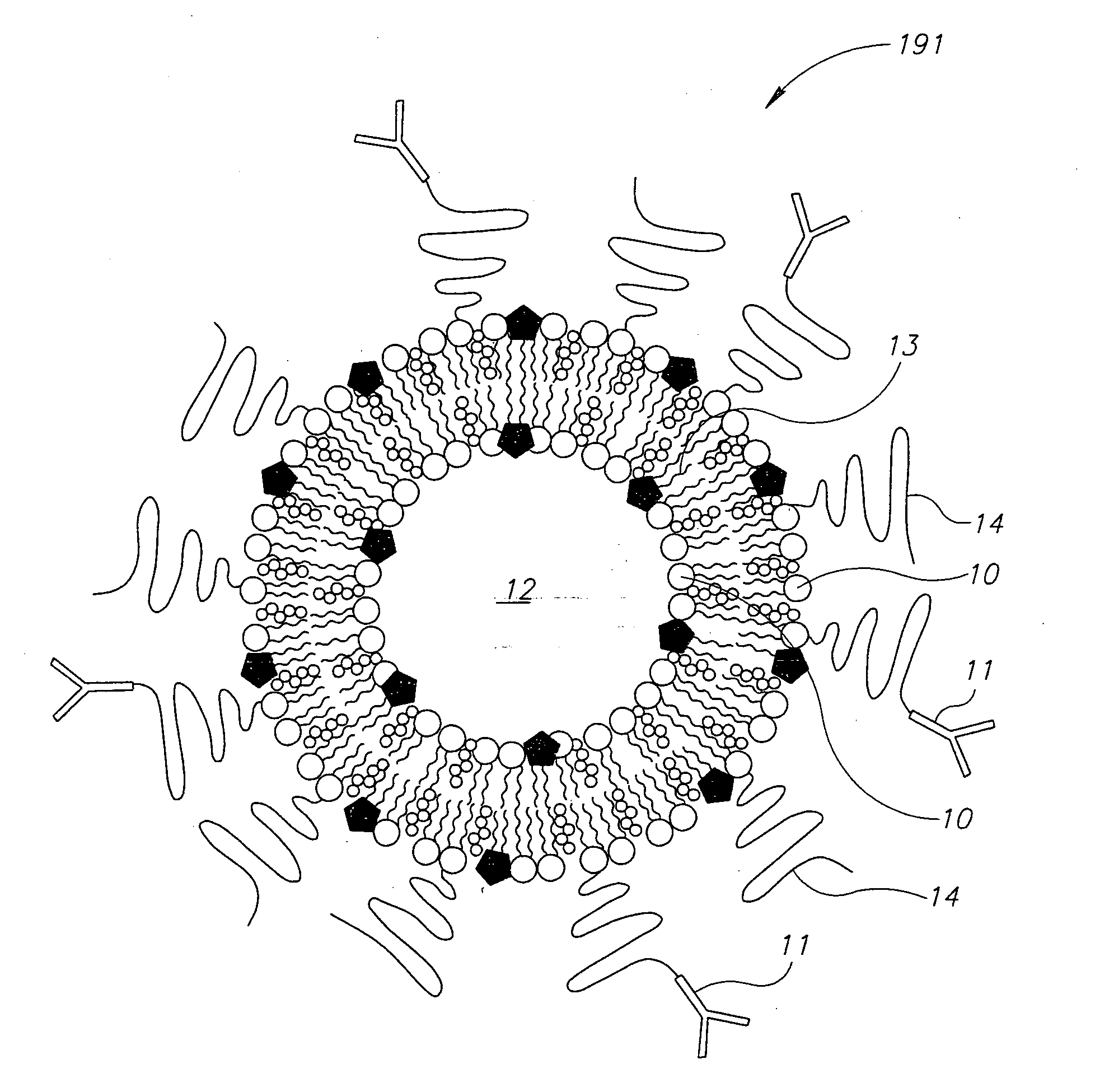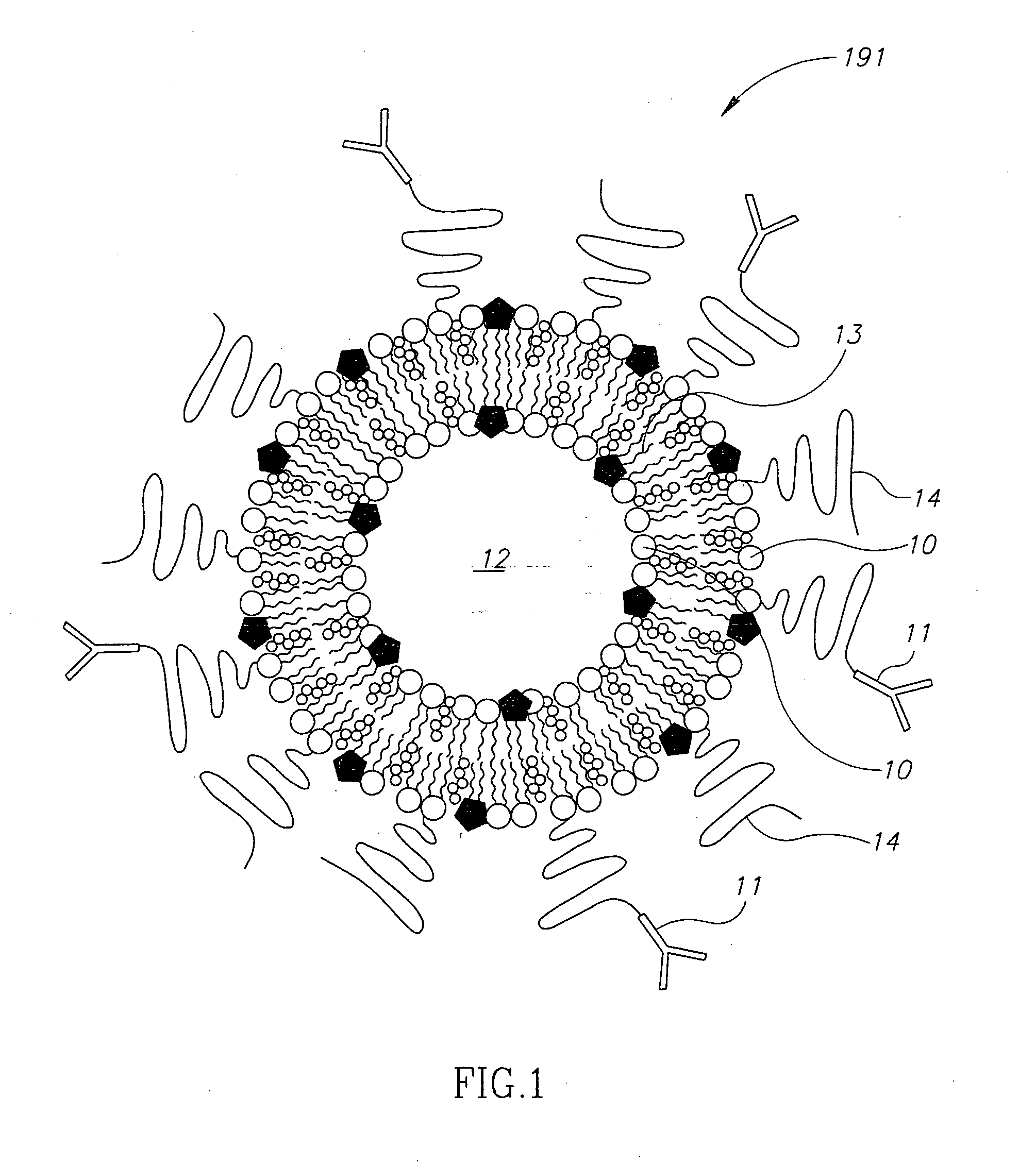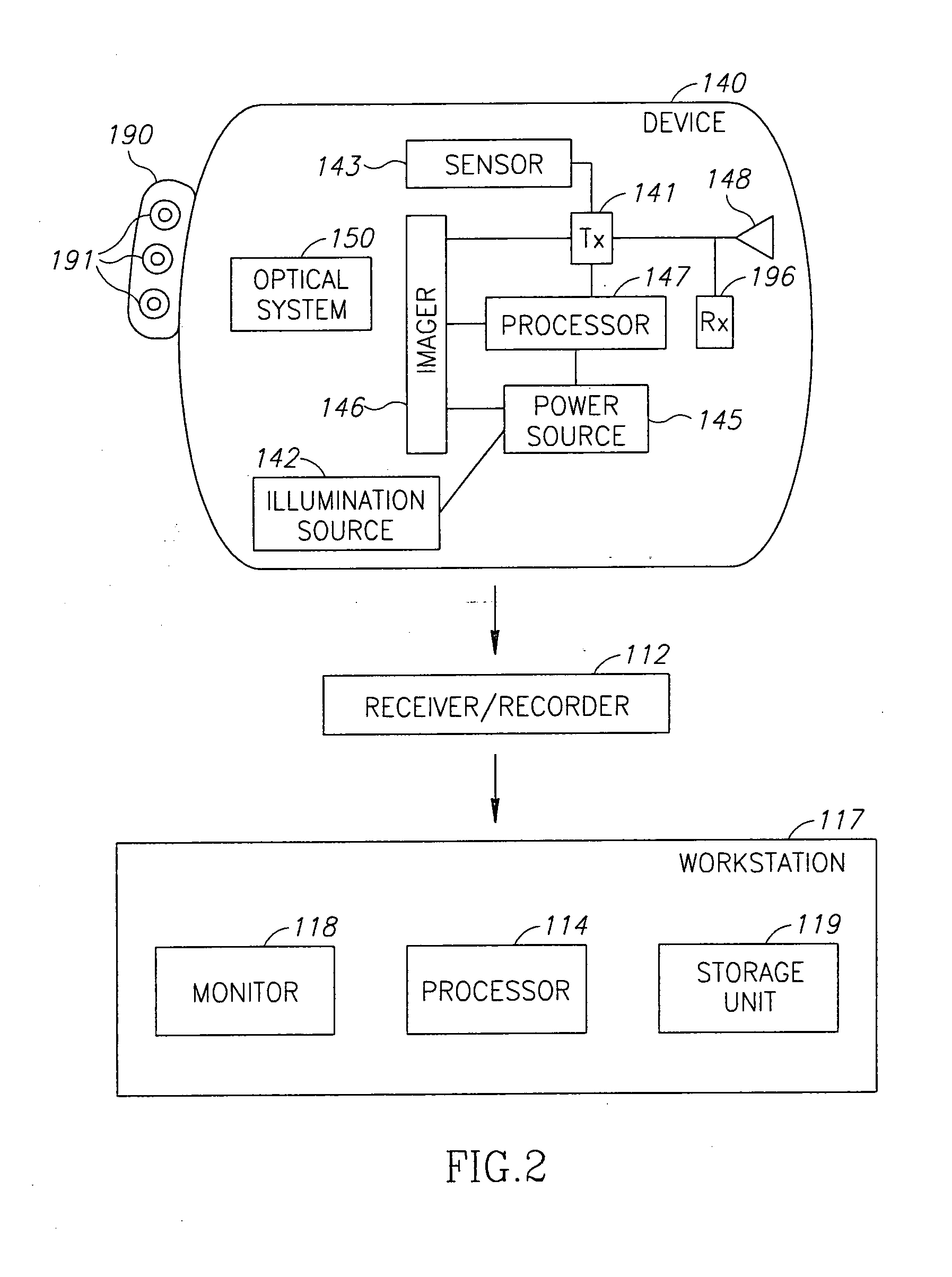Device, system and method for in-vivo analysis
a technology of in-vivo body fluids and devices, applied in the field of point of care analysis, can solve the problems of inability to localize or identify the origin of abnormal substances, cumbersome and complicated automatic machines, and inability to detect abnormal substances in the lab using simple and automatic machines,
- Summary
- Abstract
- Description
- Claims
- Application Information
AI Technical Summary
Benefits of technology
Problems solved by technology
Method used
Image
Examples
example 1
[0040]Trypsin inhibitor is a known biomarker for acute renal failure. Typsin is an enzyme known to cleave proteins containing the basic amino acid lysine. According to one embodiment of the present invention, a diagnostic kit can be prepared. The diagnostic kit, according to one embodiment, may include
[0041]A: liposomes based on phospholipids containing lysine or a mixture of polymersomes with proteins containing lysine in a solution with a pH of about 3.5 or lower;
[0042]B: pH indicator, for example bromocresol green having a yellow color in a pH lower than 3.8 and a blue color in a pH higher than 5.5. Other suitable indicators can be used. The indicator is entrapped in the liposomes;
[0043]C: Trypsin, which is typically inactive at a low pH, may be mixed with the liposome or attached to polysaccharides coating the liposome using technologies well known in the art. The above may be mixed and may be lyophilized and introduced into a test tube containing a urine sample (the sample can ...
example 2
[0044]Secretory Phospholipase A2 (sPLA2) is an enzyme that is active in the intercellular space. It is over expressed in inflammatory as well as cancerous tissues. The diagnostic kit, according to one embodiment, may include
[0045]A: liposomes based on phospholipids containing for example a fatty acid with an acryl group at 2-lysophospholipid or similar phospholipase that can be hydrolyzed by ePLA2, The liposomes are prepared in a solution with a pH of about 3.5 or lower;
[0046]B: pH indicator for example Chlorophenol red having a yellow color in a pH lower than 5.2 and a purple color at a pH higher than 6.8. Chlorophenol is nontoxic. The indicator is entrapped in the liposomes;
[0047]C: the liposome is conjugated with a specific antibody to the specific inflammation for example IBD in the colon or cancerous polyp.
[0048]In one embodiment the liposomes are encapsulated in a pill and are released only when the colon is reached e.g. liposomes are contained in a pill that is coated with a ...
example 3
[0051]Liposomes are prepared as described in Example 2 except that the signaling agent is an IR sensitive material. Said liposomes are suspended in physiological solution and introduced into the systemic blood stream by injection by a syringe or by intravenous (IV) injection or any other suitable delivery mechanisms as known in the art.
[0052]Once the liposomes are released they spread, in the body but specifically accumulate in tumors enriched with the targeted antigen. An in-vivo imaging device such as an imaging capsule or endoscope equipped with an IR source may be inserted into the patient's body, optionally after waiting a pre-defined period to allow the liposomes or nano-containers to spread and reach the tumor. The IR light may penetrate the tissue and excite the IR signaling material even if the tumor is sub facial. The light emitted by the excited IR signaling material can thus be detected by the imager of the capsule or the endoscope enabling the detection of deep tissues ...
PUM
| Property | Measurement | Unit |
|---|---|---|
| inner diameter | aaaaa | aaaaa |
| pH | aaaaa | aaaaa |
| time | aaaaa | aaaaa |
Abstract
Description
Claims
Application Information
 Login to View More
Login to View More - R&D
- Intellectual Property
- Life Sciences
- Materials
- Tech Scout
- Unparalleled Data Quality
- Higher Quality Content
- 60% Fewer Hallucinations
Browse by: Latest US Patents, China's latest patents, Technical Efficacy Thesaurus, Application Domain, Technology Topic, Popular Technical Reports.
© 2025 PatSnap. All rights reserved.Legal|Privacy policy|Modern Slavery Act Transparency Statement|Sitemap|About US| Contact US: help@patsnap.com



